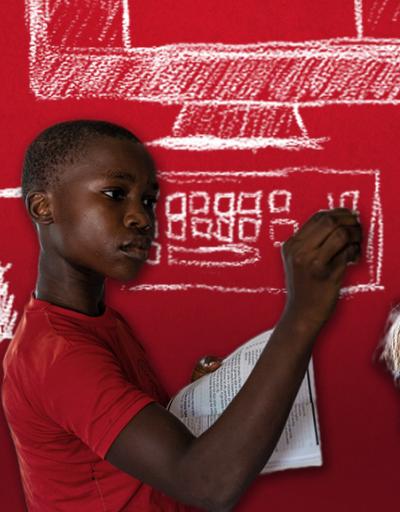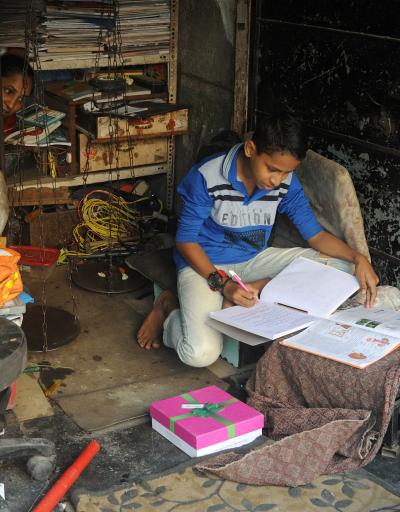

Education financing

The Education Finance Watch 2023 reports that foreign aid to education fell by 7%, from USD 19.3 billion in 2020 to USD 17.8 billion in 2021.

In 2021, countries cut their public expenditures on education with on average 13.5% when compared to the previous year.

Low- and lower-middle-income countries face a yearly financing gap of USD 97 billion to meet their national SDG4 targets, with Sub-Saharan countries accounting for USD 70 billion of this shortfall.

Between 2005-2021, the average public spending on education as a share of GDP has increased only marginally with 0.3%
The COVID-19 pandemic disrupted the education of more than 90% of the world’s children — the largest disruption of education systems at a global scale in history. The pandemic has exposed large disparities not only between countries and education systems in terms of access, quality and relevance, but also between different learner groups within countries.
The Transforming Education Summit (TES) was convened by the United Nations Secretary-General in 2022 to respond to the education crisis on three fronts — equity, quality and relevance — the lack of inclusion and equity, quality, and relevance — that severely impacts learners, and to renew commitments to achieving Sustainable Development Goal 4 (SDG4).
At the core of this education crisis is a global financing gap, which is detrimental to adequate and equitable funding of public education policies worldwide, and is presently thwarting the advancement of the SDGs.
The UNESCO Global Education Monitoring Report (GEM) 2023 estimates that between 2023 and 2030, the average annual financing gap amounts to a staggering USD 97 billion per year for low- and lower-middle-income countries to reach their national SDG4 targets.
Following from the same UNESCO report, when measured over a longer time interval, the average public spending on education as a share of GDP has increased by a disappointing 0.3% (from 3.9% of GDP in 2005 to 4.2% in 2021).
On average, spending on education amounted to 14.1% within total government budgets in 2021. However, from the 178 countries with available data for 2017 to 2022, more than one third of the countries did not meet either of the internationally established education spending benchmarks of at least 4% of GDP and 15% of total public expenditure.
In addition, the Education Finance Watch (EFW) 2022 reports that government financing for education has not kept pace with the needs to recover from the learning crisis, which was amplified the school closures and disruptions caused by the COVID-19 pandemic.
While a third of upper-middle and high-income countries have reduced their education budgets since the onset of the COVID-19 pandemic, two-thirds of low- and lower-middle-income countries included in the data collected for the EFW have cut public expenditure on education. Overall, the average decline observed in public spending of education amounted to 13.5% compared to 2020. The sizeable contractions witnessed in education public spending are contributing to a further exacerbation of the learning crisis.
The Education Finance Watch 2023 reports that foreign aid to education fell by 7%, from USD 19.3 billion in 2020 to USD 17.8 billion in 2021.
Closing the gap: TES call-to-action on educational investment
Prioritizing education as a long-term investment will not only accelerate progress towards achieving the SDG 2030 targets for education, but will also be foundational in driving progress towards all other Sustainable Development Goals. Investing in education is indispensable in securing progress in critical areas like employment and decent work, peace and security, climate action, and healthcare. Significant resources are therefore needed to ensure continuous, inclusive, equitable, and quality education for all.
Mobilizing sufficient resources (both domestically and internationally) and prioritizing investing in education systems is pivotal in advancing progress in global development.
To follow-up on the Transforming Education Summit to advance with SDG4, a call to action on educational investment was released urging all countries and all partners to take more concrete action both nationally and internationally in order to invest more, to invest more equitably and to invest more efficiently in education.
As apex governing body of the Global Education Cooperation Mechanism (GCM) which is the global multi-stakeholder mechanism for education in the 2030 Agenda, the High-Level Steering Committee (HLSC) is leading the follow-up on TES.
The three core functions of the SDG4-Education 2030 High-Level Steering Committee are to:
Promote evidence-based policy formulation and implementation (FA1).
Monitor progress and improve the availability/use of data (FA2).
Drive financing mobilization and improve alignment (FA3).
Under FA3: Drive financing mobilization and improve alignment, the aim is to support the coordination of global and domestic actors towards mobilizing greater and more diversified levels of equitable and efficient financing to education, aimed at achieving impact at country level.
With support of the HLSC Inter-Agency Secretariat, the work under FA3 is guided by a Technical Committee, composed of members of the HLSC represented at technical level. The Technical Committee works on a variety of education financing related issues and initiatives, including on:
Stocktaking, concretizing, and monitoring actions following the TES Call-to-Action on educational investment, which contains a set of 24 actions addressed to Governments and the International Community to invest more, invest more equitably, and invest more efficiently in education.
Improving multilateral cooperation and alignment to increase efficiencies and scale up funding for education as a global public good and to highlight the need for collective action and investment in education.
Advocacy for mobilizing more funding from both domestic and international sources, aimed at widening fiscal space of countries to allow adequate investments in education.
Contribute to building knowledge repositories on education financing, including on best practices, (innovative) financing mechanisms and tools, national and international commitments on education finance, education finance strategies and policy development,
Tackling the education crisis from the financial side of the equation requires international cooperation and strengthening of country-led strategic planning and financing processes, which are pivotal to effectively closing the financial and resource gaps that exist in education.
Check the Dashboard of Country Commitments and Actions to discover which countries have committed to address financing of education, and which countries are undertaking concrete actions to invest more, invest more equitably, and invest more efficiently in education.



